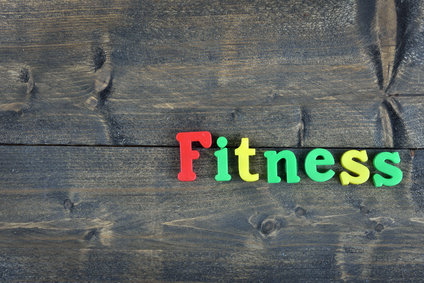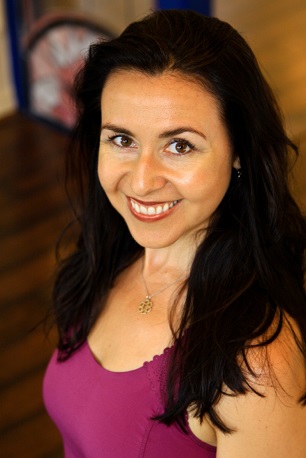Pilates for Health or for Fitness?
Marie Wittman
What is Pilates good for? This is a question we have all answered in one form or another. If you have a website, it would be the benefits you list. At a dinner party, it would be the rewards you extol when asked the difference between yoga and Pilates. Generally, what appears on this list are health and fitness outcomes as though they are the same thing.
Health and Fitness Aren’t the Same Thing
The benefits that we attribute to Pilates fall under two broad categories: health and fitness. While many people use these terms interchangeably, the reality is that they are quite different states of human physicality. Health is defined as a state in which there is no illness or injury (though some may argue that this definition in the negative is problematic and fails to include the full scope of what we commonly think of as “feeling well”). Fitness is defined as the condition of being physically fit, with “fit” meaning: possessing a suitable quality or standard to meet the required purpose.
The problem with using the two terms as if they mean basically the same thing is that a person can be healthy without being fit (or capable of physically meeting a specific objective) and can be fit without being healthy – in other words they could be ill or injured while still able to perform something. Culturally, we tend to blend these two concepts and some may even think my separation of these concepts is inaccurate. But the extensive research on inactivity physiology and sedentary behavior demonstrates that, in fact, individuals who exercise regularly suffer from the same health issues as non-exercisers. Why this is so can be a topic for another discussion; the point here is that teaching Pilates for fitness will not necessarily promote health and vice versa, so it is good business practice, and more ethical, for us to be clear on what outcomes we can truly offer.
The lines between health and fitness can be quite murky, because Pilates can be taught in a manner that actually goes beyond the exercise without this being fully realized. Let this conversation between Brett and me illustrate this point:
Marie: The exercise Grasshopper on the Reformer is about skill and performance in Pilates, but it does not necessarily improve health. It doesn’t mean it isn’t awesome to do and fun and give a sense of accomplishment. But it shouldn’t be confused as having some impact on health.
Brett: As I see it, if you are doing Grasshopper well, and doing it consciously and with the aim to become more intelligent about your being in the process of doing it, then the benefits would be subtle but far-reaching. Hopefully, it would translate to a greater sense of support from the center in all other exercises and activities, and a deeper vision of the excess tension we all carry. This deeper vision/consciousness allows us, even if ever so slightly, to have less of it – resulting in a greater ease of movement and balance in everyday life.
Marie: You mention doing the Grasshopper “consciously and with the aim to become more intelligent about your being in the process of doing it” and I agree with you. Yet, this is a result of the way the exercise is taught (i.e. what the teacher brings to the equation) not the exercise itself. What you are alluding to here are things such as:
- interoception or somatics (depending on how this is actually taught) — with the part about intelligence of being and consciousness
- neurological sensory awareness — with the part about become conscious of tensed muscles
- neuromotor exercise — with the part about greater ease of movement and balance in everyday life
It can be taught this way and teaching it this way does promote internal awareness, a movement pattern that draws on the strengths of the abdominal and pelvic regions, and even clue someone into the compensations that incorporate other muscles beyond what is needed for a task — creating tensed muscles. But these attributes are not from the exercise but from the teacher and his/her unique vision of the Pilates method. It is a vision that many of us teachers share, but it is not universal as many of us know when we witness someone teaching a Pilates exercise as just knee and hip flexion.

Distinguishing between health and fitness is one way at becoming clearer on what Pilates is for. For some of us, Pilates was taught to us as all these things in one, but all the nuances of teaching Grasshopper (or any other exercise) in the way you described is never really defined by training programs. This teaching style (what many would think of as just the essence of Pilates) is ephemeral, hard to define, and vague. It appears to be part of the more mechanical aspects of a Pilates exercise when it really isn’t.
Grasshopper could very easily be taught without any of the cues and information that guide the client to experiencing all the things you mentioned. The client would eventually become stronger at doing Grasshopper. The motor control of the exercise would have some flow over into motor control in general, but this is not the same thing as promoting health.
However, should one teach Pilates incorporating all these additional aspects (consciousness of tensed muscles, intelligence of being, etc.), one can definitely tailor sessions toward improving aspects of health (such as neuromotor function), but we first need to see these distinctions in order to really hone in on what we are doing and for which client.
Grasshopper Your Way to Health?
Being clear in the benefits we can faithfully provide our clients begins with us being clear on the manner we wish to teach Pilates. If, for example, the way you teach incorporates building the connection between thoughts and muscle activity, then include benefits that relate to neurology on your website. If you focus more on the technique aspects of the exercises and progressing through the levels, then highlighting fitness outcomes in your brochures showcases the results that you naturally deliver. Focusing in on whether you prefer the fitness aspects or the health aspects of the Pilates method can do wonders for your enjoyment of teaching and for the robustness of your business.


